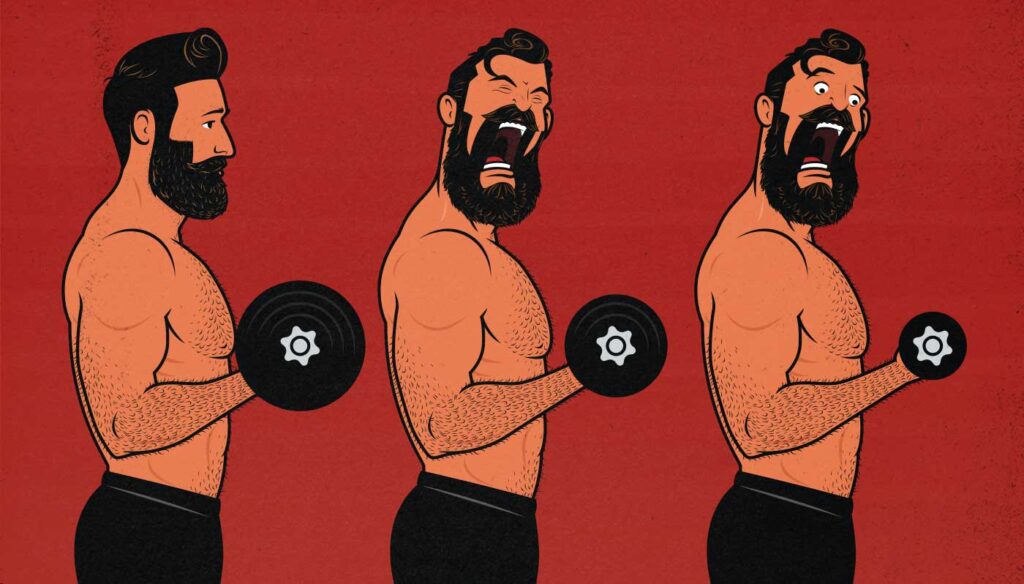
How to Do Drop Sets
Drop sets are a traditional bodybuilding technique where you do a set, grab a lighter weight, and immediately do another set. Bodybuilders have been using them for the past 80 years as a fast way to blast a muscle with extra sets, and they’ve fared quite well in the research. If you use them cleverly, they can indeed help you build more muscle in less time.
So, what are drop sets? How do you do them? And how can you use them to build more muscle?
What is a Drop Set?
A drop set is when you do a normal set, reduce the weight, and immediately do another set. For example, you might do a set of barbell curls with 75 pounds, then a second set with 60 pounds, and then a third set with 50 pounds.
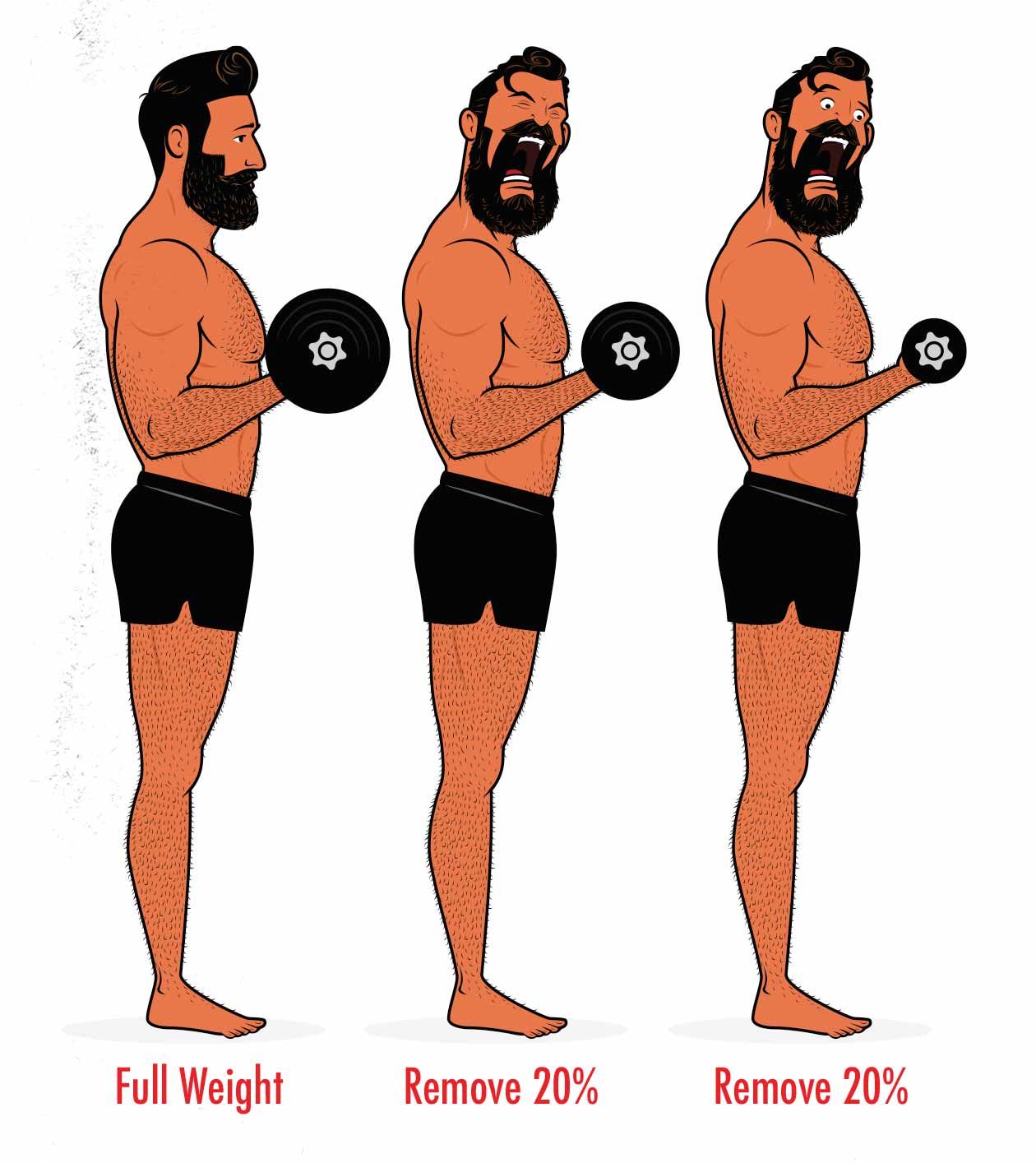
Drop sets were invented in the 1940s, and have been popular ever since. They allow you to cram a bunch of challenging sets into a short period of time, keeping your workouts shorter and denser. In that sense, they’re similar to supersets and giant sets.
How To Do Drop Sets
There are a few different ways of doing drop sets, but the general idea is always the same: do a regular set, strip some weight off the bar, and then immediately do another set. What varies is when to do them, how many sets to do, how close to failure to go, and how much weight you’re supposed to drop between sets.
Here’s the best default way of doing drop sets:
- Do your regular sets with 0–3 reps in reserve. That means that if you’re doing 10 reps per set, choose a weight that you can do for about 12 reps. During your first set, stop at 10 reps, leaving 2 reps in reserve. On your second set, your muscles will be a little bit tired. You should still be able to get 10 reps, but maybe with only a single rep in reserve. On your third set, maybe you only barely manage to get 10 reps, leaving 0 reps in reserve.
- Do your drop sets after finishing all of your regular sets for that muscle. Let’s say that you’re doing a full-body workout, and you have two exercises for your biceps that day: 4 sets of chin-ups and 3 sets of barbell curls. We want to make sure that you have good energy for all of those sets, so don’t start your drop sets until you’ve finished your third set of barbell curls.
- Feel free to swap out regular sets for drop sets. If your workout routine lists 3 sets of barbell curls, but you’re trying to get your workout done in a hurry, you’d want to do a regular set of barbell curls followed by two quick drop sets. That way you’re doing the same number of sets but in a fraction of the time.
- Do drop sets with smaller lifts. If you do drop sets with lighter isolation lifts, your cardiovascular system and stabilizer muscles are less likely to be limiting factors, allowing you to challenge the strength of your target muscles. For example, if you do drop sets with chin-ups, you’ll just feel winded. But if you do them with barbell curls, your biceps will scream bloody murder. There are exceptions, of course. I find it fairly easy to do drop sets with rows and overhead presses, not so much with squats.
- You can do drop sets with anything—barbells, dumbbells, exercise machines, resistance bands, and even some bodyweight exercises. For example, if you’re doing drop sets with push-ups, you can lighten the load by doing them from your knees or raising your hands up on a bench.
- Drop the weight by roughly 20–25%. You don’t need to pull out a calculator, a rough estimation is fine. But it should be light enough that you can get at least 6 reps, and usually more like 10–12.
- Do your drop sets with 0 reps in reserve. After you finish all of your regular sets, now it’s time to blast your muscles with drop sets. You don’t need to fail your reps, but try to lift until you’re sure you can’t get another one. And if you fail, no problem. Drop sets are supposed to be hard.
- Do 2–3 drop sets. Most research shows that doing 2–3 drop sets does a good job of stimulating muscle growth. There’s no research showing that more is better (study).
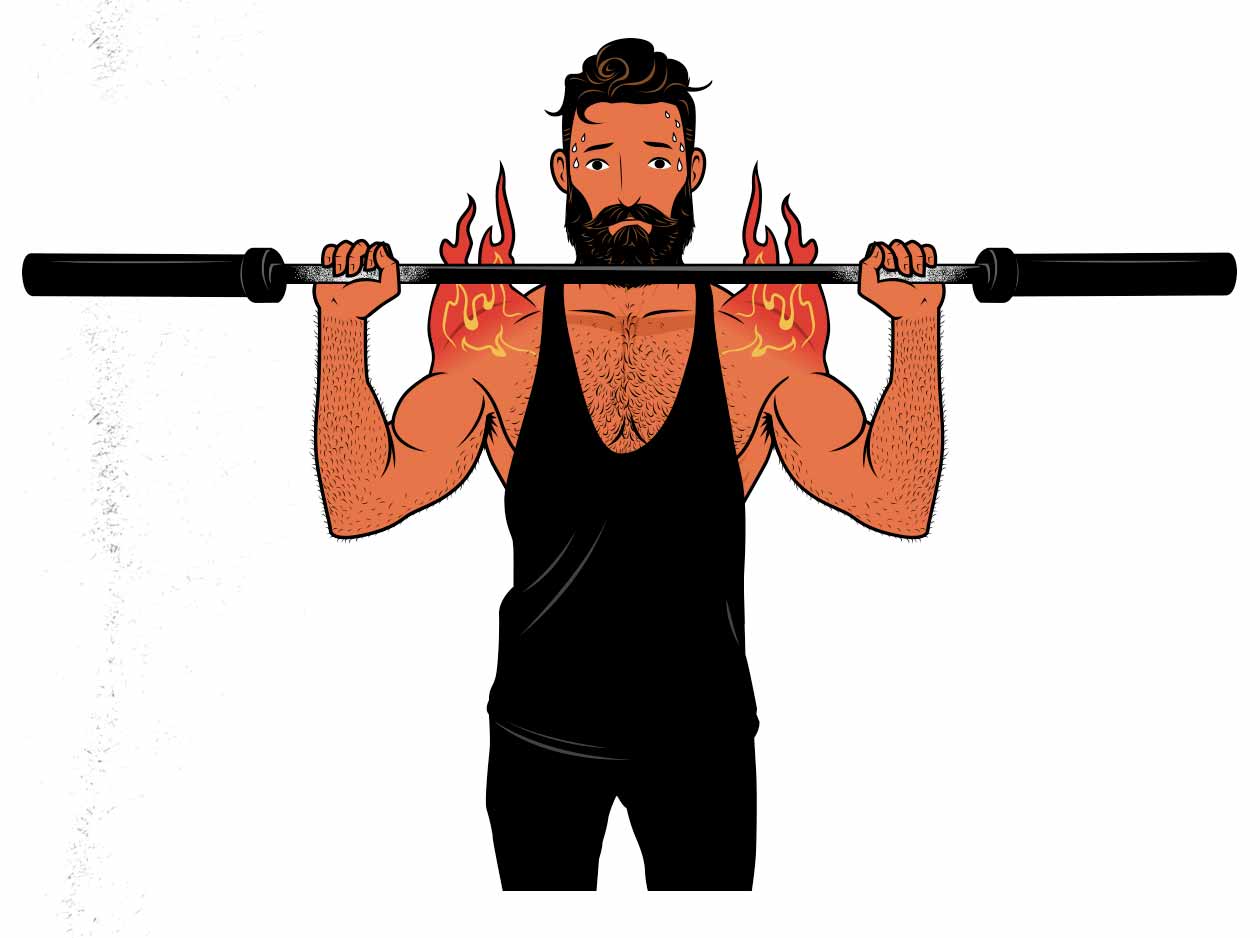
So putting all of that together, let’s say that you’re doing a full-body workout and you want to hit your biceps a bit harder. Your workout has 4 sets of chin-ups and 3 sets of barbell curls. Do your chin-ups and barbell curls like normal, but when you finish your final set of curls, strip 20% of the weight off the bar and immediately do a drop set. Then remove another 20% and do a second drop set.
For another example, let’s say that you’re behind schedule and you don’t have time to do all 3 sets of barbell curls. No problem. Do your first set, strip 20% off the bar, and immediately do a drop set. Then strip another 20% off the bar and do another drop set. Now you’ve done 3 sets of barbell curls without needing to waste minutes resting. You won’t gain quite as much strength, but you’ll have done a good job of stimulating muscle growth in much less time.
How Much Weight Should You Drop In a Drop Set?
When lowering the weight between sets of drop sets, the idea is to choose a weight that’s light enough that you can do another set with enough reps in it to stimulate muscle growth. If you can get anywhere from 6–12 extra reps, that’s great. And to do that, it usually means dropping the weight by roughly 20–25% (study).
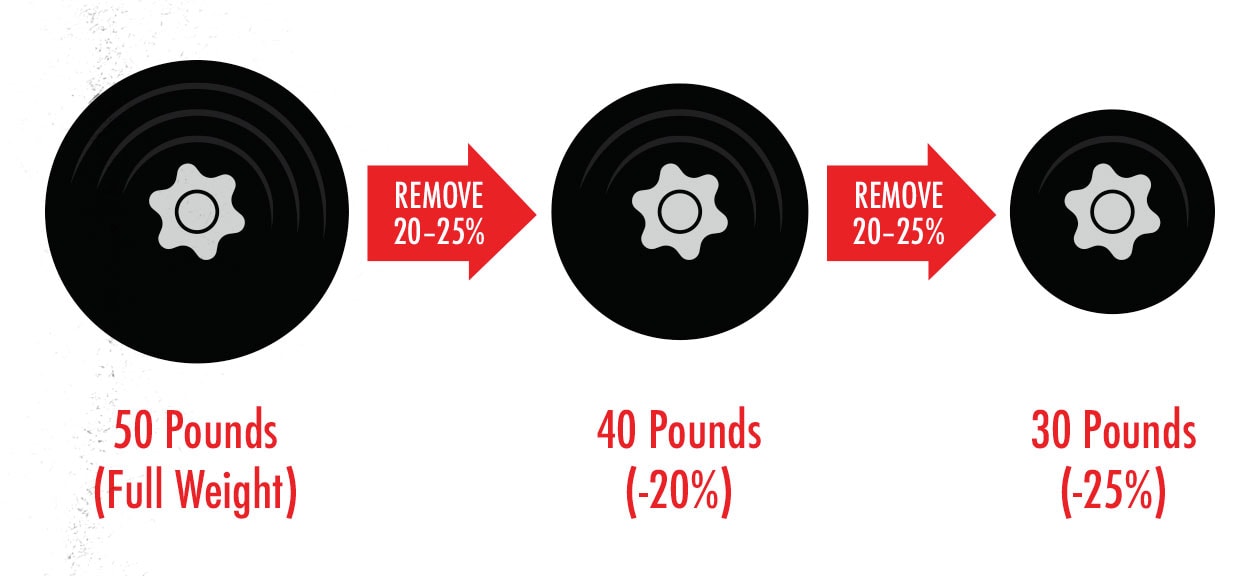
In practice, you aren’t going to be using a calculator or trying to get an exact amount of weight on the bar. What you want to do is strip a plate off the barbell, grab the next-lightest dumbbell or resistance band, move to a lower pin on the exercise machine, or choose an easier bodyweight variation. If you remove 30% one set and 18% the next set, that’s perfectly fine. The important thing is that you’re lowering the weight enough to get at least 6 more reps in.
Are Drop Sets Good for Building Muscle?
Drop sets are a bonafide muscle-building technique, with numerous studies showing their effectiveness (study, study, study). The muscle growth researcher, Dr Brad Schoenfeld, suspects that they stimulate muscle growth by causing greater motor unit fatigue in our muscles (study) and enhancing metabolic stress (study).
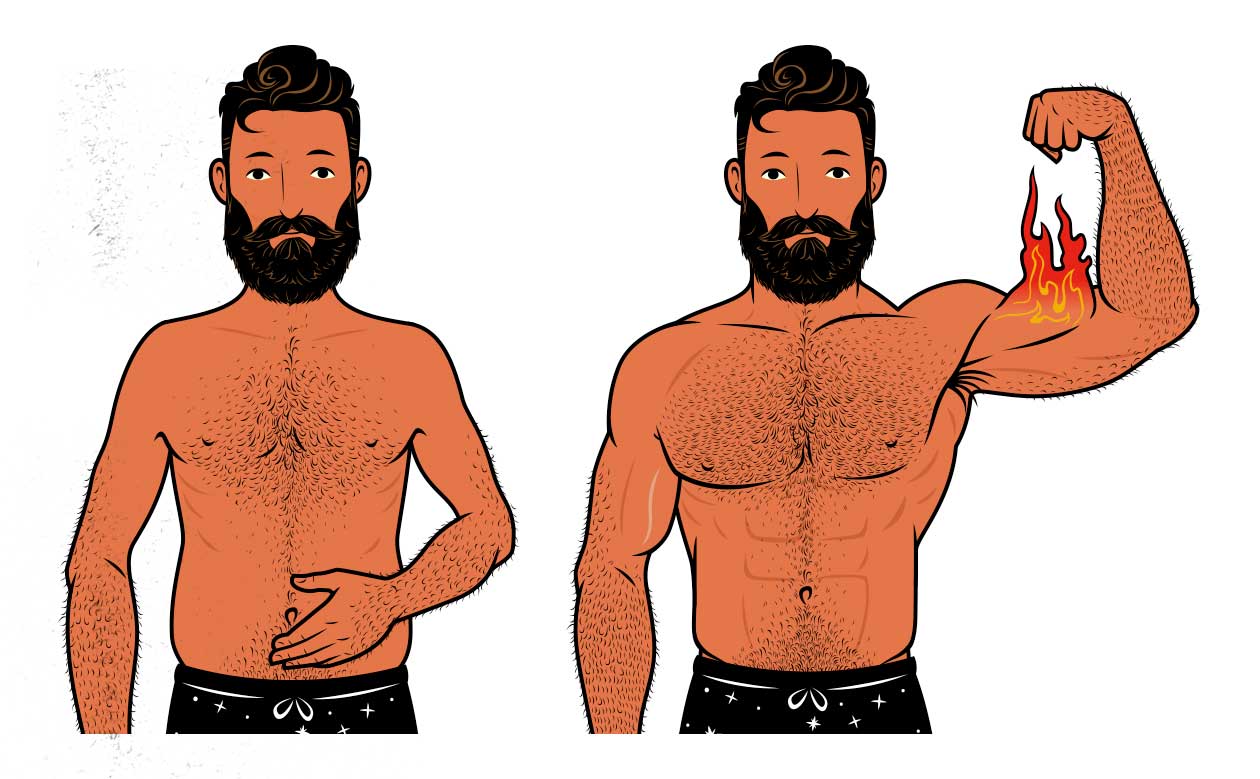
One of the more promising studies looking into drop sets is this one by Goto and colleagues. It found that by adding drop sets to a workout routine, the participants were able to continue gaining muscle size and strength after the other group plateaued. This says little about whether drop sets are better than straight sets, but it does tell us that adding drop sets to your workout routine is a good way to add in extra sets without making your workouts longer.
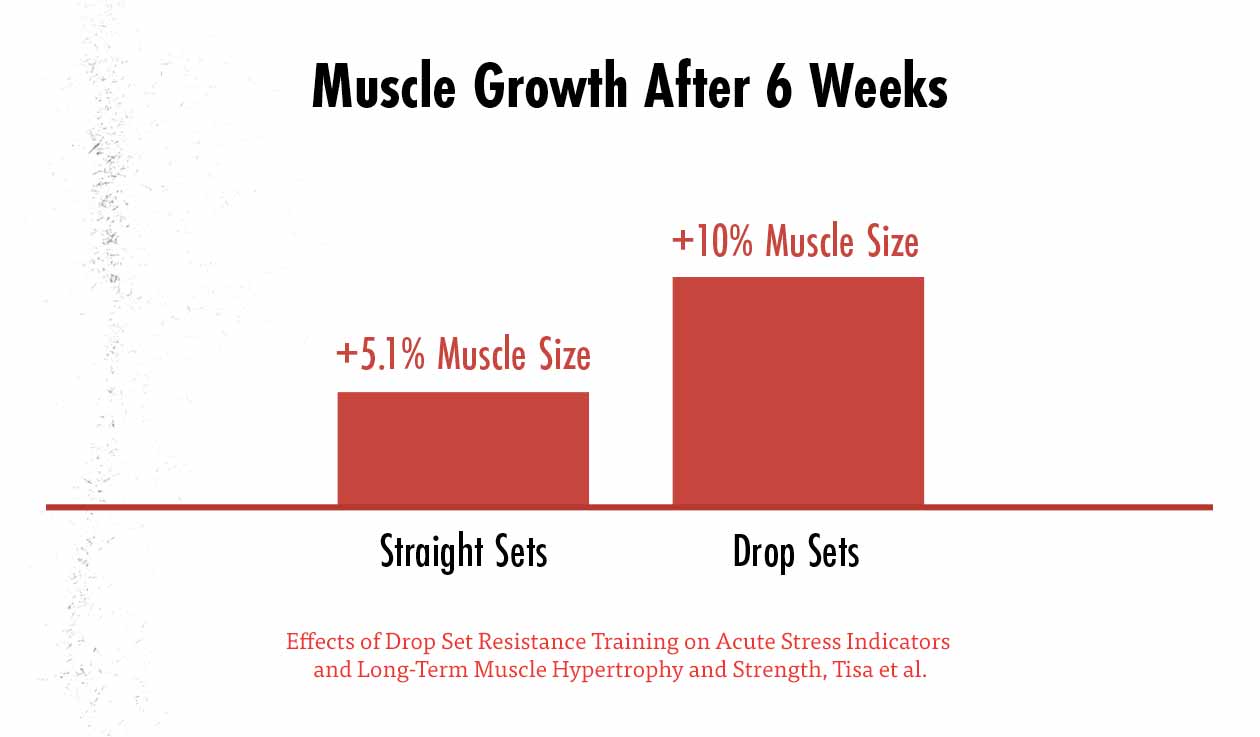
When we look at what happens if we replace straight sets with drop sets, it’s a bit harder to say what happens. In this study by Fink et al on intermediate lifters, one group did 3 straight sets of triceps pushdowns, the other did one straight set followed by 3* drop sets. The group doing drop sets gained nearly twice as much muscle size, but the results didn’t reach statistical significance. The same thing happened in this study and this study and this study, with the differences in muscle growth varying, but all of them failing to reach statistical significance.
*The researchers had the participants drop the weight 3 times, which they call “a” drop set. We call that “3” drop sets, but it’s just a difference in terminology.
So looking at all of the research on drop sets, it seems that they stimulate about the same amount of muscle growth as straight sets. What’s nice about them, though, is that in all of these studies, the drop set groups finished their sets in less than half the time.
Overall, it seems that if we add drop sets to our workout routines, they seem to reliably improve muscle growth, and if we replace straight sets with drop sets, we should be able to gain a similar amount of muscle size in less time.
The Disadvantage of Drop Sets
Where drop sets falter is with strength training. Drop sets mean lowering the load, and lifting lighter loads is worse for gaining strength. It’s possible to do heavy drop sets, but as this systematic review explains, it stops becoming practical—it’s too fatiguing. That doesn’t mean that drop sets are only good for gaining muscle mass, though. They do a great job of increasing our muscular endurance, too.
Summary
Drop sets are an effective way to stimulate muscle growth, and there are two situations where they can help you build more muscle:
- Adding volume: if you want to add extra volume to your workout routine, adding drop sets to some of your isolation lifts at the end of your workouts is a very efficient way of doing it. The only downside is that your workouts will become a bit harder to recover from.
- Shortening your workouts: if you don’t have very long to train, it can help to do a single straight set followed by 2–3 drop sets. That way, you still get in a few challenging sets for each lift, but you’re skipping over the rest times, allowing you to finish your workouts twice as fast. The downside is that it won’t work very well on bigger compound lifts, and you won’t gain as much strength. Better to save it for the lighter lifts at the end of your workout.
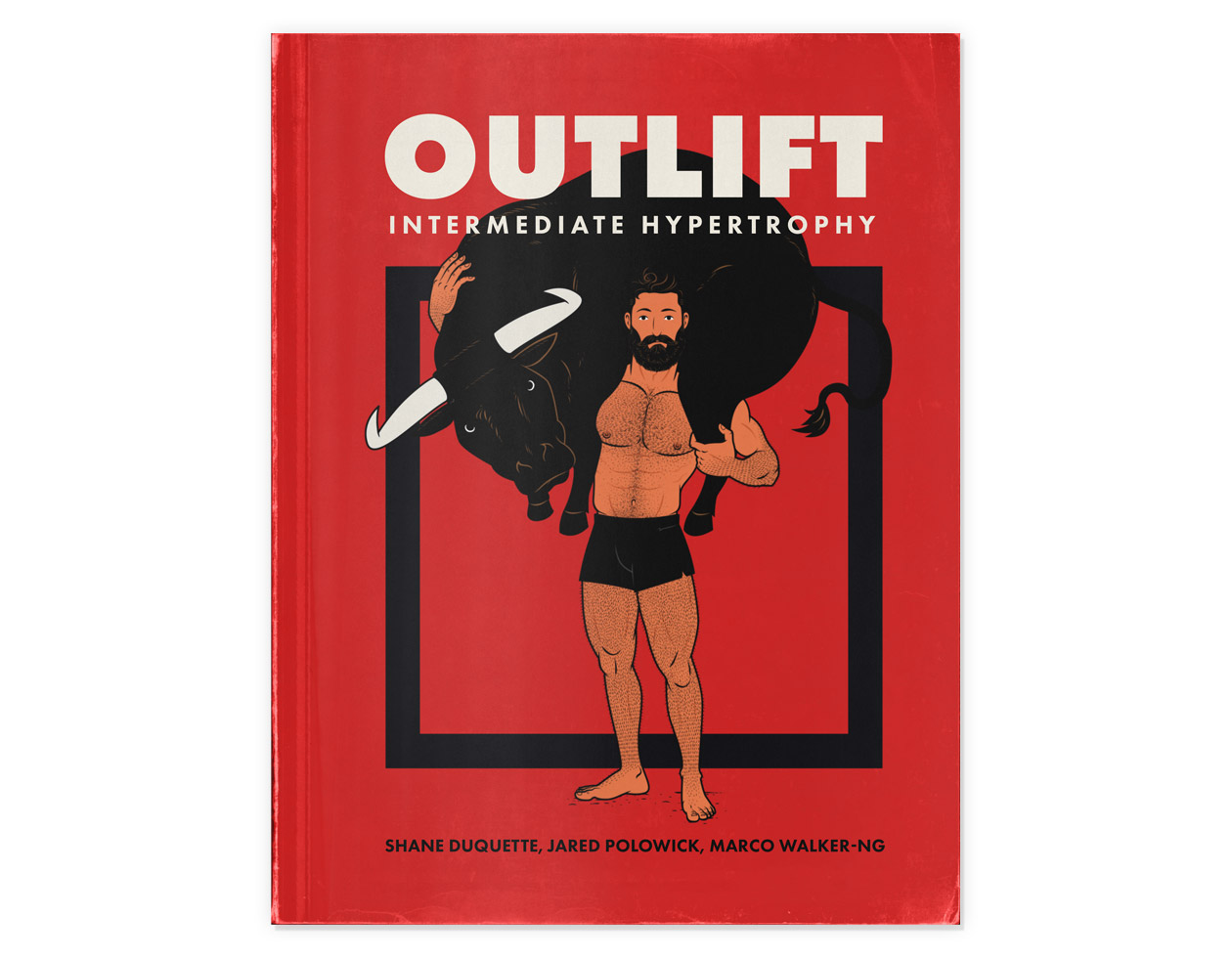
If you want a customizable workout program (and full guide) that builds in these principles, check out our Outlift Intermediate Bulking Program. If you liked this article, you’ll love the full program.



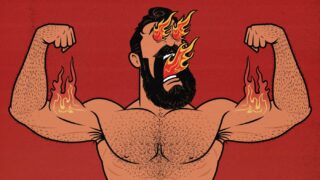
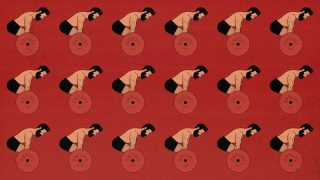
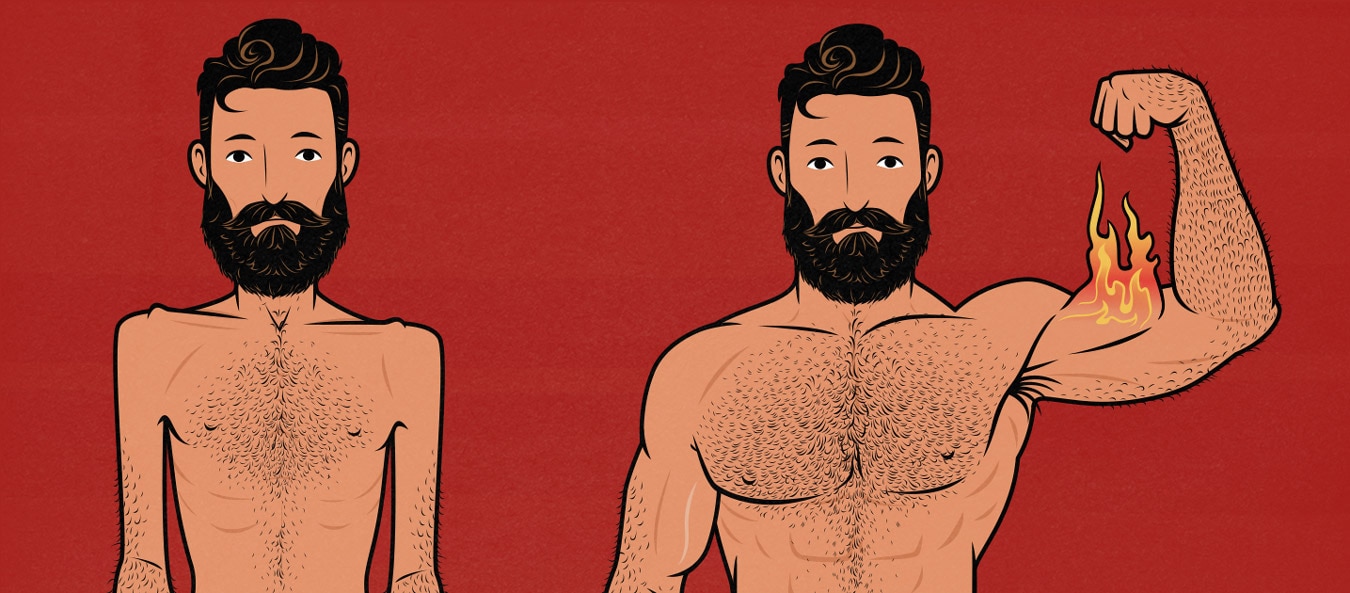
Hi Shane, after going through this article, I conclude that:
First, drop sets are not important from strength development aspect.
Secondly, as you have mentioned, hypertrophy differences are not significant enough.
Only benefit seems to be a shorter workout which is an advantage under very rare situations.
Hey Farhan, that’s true. I doubt that drop sets boost growth compared to straight sets, especially in the longer term. But they do allow us to either shorten our workouts or squeeze in some extra volume, and I think that can be an advantage for a lot of people. A lot of people don’t have unlimited time to train (myself included).
Yes Shane, I also think so.
These scenarios have holes in them. For example, since load is not specified, you can’t compare volume (resistance x reps x sets). Proximity to failure should be equated as well.
I sometimes do drop sets as such:
Say, cable curls. After a light, non-fatiguing warm-up, I choose a weight where I will fail at 4-6 reps. Reduce weight, fail again at 4-6 reps. Repeat until approx 20 reps are achieved.
Talk about a set productive across the spectrum!
Hey Jim, I’m not quite sure what you mean about the scenarios having holes in them. When doing drop sets, there isn’t enough rest time to recover strength between sets. On a per-set basis, doing drop sets means using a lower training volume. That’s why we can’t compare drop sets and straight sets on a per-set basis. But I’m not sure if that’s what you meant.
Your drop-set routine sounds great 🙂
Hi Shane,
1st, I just found the site after lots of pub med research and was referring to the studies themselves that were cited, not necessarily the scenarios you guys propose. Without knowing RIR or proximity to failure it is difficult to interpret differential outcomes. The way you guys present it is awesome.
I will add, in response to another poster, that bout duration is not a rare consideration. Forgetting technical aspects of exhaustion, there is also the consideration of practicality and sustainability (protocol compliance).
I offer these comments as discussion, not debate.
I meant to say in my prior comment, same thinking regarding load. Many people & studies will cite or imply the %1RM for load consideration when discussing straight sets. Not so much for drop sets. This goes with proximity to failure. In the drop sets being used as comparison (in studies), what load was used taken to how many RIR (proximity to failure) for each “sub-set” of the drop set? These are of course relevant variables. This might seem laboriously technical, but then again, we are discussing scientific studies.
I try to account for this in my workout notation as I am unable to make any sense of workout logs from years ago when I did not specify anything beyond weight, sets, reps.
These studies had the participants take their drop sets to failure.
Fair enough, it appears I missed that in the specific studies you cited.
By the way I am not criticizing your presentations; rather I find them up at the top of what I have seen. At the same time, as a trained research methods & experimental design guy, who at 54 has been lifting since 12 and has advised many trainees, I am sure we can agree that substantive questions are good for what we are both seeking.
As a fellow “skinny” [read moderate ectomorph] I SO welcome your expression.
Thank you
No problem, man! I love questions. It’s totally fair to ask about the specifics of the studies.
That’s so cool how you’ve been lifting for 42 years! Amazing! I hope to get there one day.
What’s better drop sets or rest pause?
Drops sets are easier if you want to stimulate muscle growth in a short period of workout time. Rest pause might be better if you’re trying to accomplish something similar but also handle more weight. Might have more carryover to 1-rep max strength? If you want something that’s actually BETTER, it would probably be supersets, since you get the advantages of doing full sets with heavier weights.
Hey, Shane 🙂
What do you think about Myo Reps for a skinny ectomorph trying to gain some size?
Love your content. Very grateful for all the info and good vibes you share.
Thanks 🙂
Hey Ayan, thank you!
Myo reps are good. Very similar to drop sets. They can be a good way to save time. Think of how much overall weight you’re lifting and balance it out that way. You might need to do two myo reps to get the same stimulus as one regular set. But that’s fine. You’ll still save a ton of time 🙂
Thank you, brother. 🙂
Hey Shane, just wanted to know- whether or not to count drop sets as a set for that particular muscle group.
For eg – bicep curl : 3 sets + 1 drop set, will be counted as 3 or 4 sets of the muscle group.
I count it as around half a set.
Counting sets is never quite exact. Compound exercises train some muscles better than others. Some exercises work our muscles under a deeper stretch. We take some exercises closer to failure. Drop sets are a sort of like taking an exercise past failure.
But if you keep these variables relatively constant for a while, you’ll get a feel for your volume: are you never sore? Too sore? Fatigued? Most importantly: are you making progress on your exercises? And then you can adjust your volume accordingly.